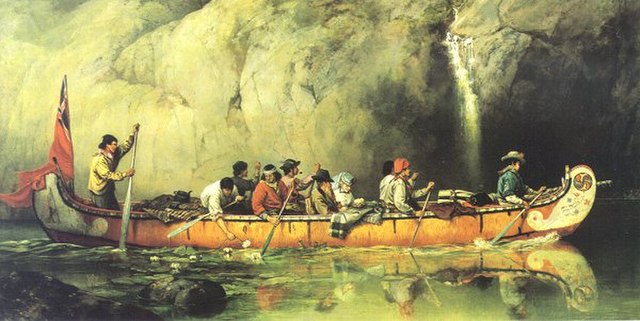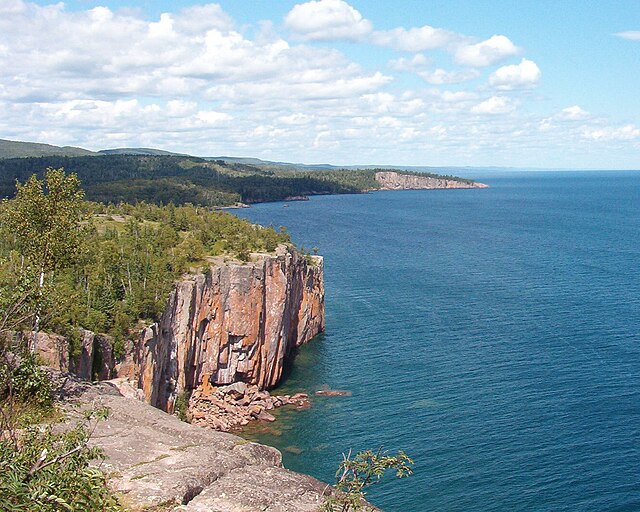Grand Portage National Monument
Grand Portage National Monument is a United States National Monument located on the north shore of Lake Superior in northeastern Minnesota that preserves a vital center of fur trade activity and Anishinaabeg Ojibwe heritage. The area became one of the British Empire's four main fur trading centers in North America, along with Fort Niagara, Fort Detroit, and Michilimackinac.
The Great Hall at Grand Portage
Ojibwe Wigwam at Grand Portage, painted by Eastman Johnson in 1857
Canoe Manned by Voyageurs Passing a Waterfall (Ontario) painted by Frances Anne Hopkins in 1869
Grand Portage Indian Reservation (shown in taupe) and the Grand Portage National Monument (shown in green)
Minnesota is a state in the Upper Midwestern region of the United States. It is the 12th largest U.S. state in area and the 22nd most populous, with over 5.75 million residents. Minnesota is known as the "Land of 10,000 Lakes" but actually has 14,380 bodies of fresh water covering at least ten acres each; roughly a third of the state is forested; much of the remainder is prairie and farmland. More than 60% of Minnesotans live in the Minneapolis–Saint Paul metropolitan area, known as the "Twin Cities", the state's main political, economic, and cultural hub and the 16th-largest metropolitan area in the U.S. Other minor metropolitan and micropolitan statistical areas include Duluth, Mankato, Moorhead, Rochester, and St. Cloud.

Mixed Dakota-Europeans who were rescued by "non-hostile" Dakota. The girl in the foreground wrapped in the striped blanket is Elise Robertson, the sister of Thomas Robertson, a mixed blood who acted as an intermediary between the Dakota and the European-Americans during the Dakota War of 1862
Phelps Mill in Otter Tail County
Tilted beds of the Middle Precambrian Thomson Formation in Jay Cooke State Park
Palisade Head on Lake Superior was formed from a Precambrian rhyolitic lava flow.








